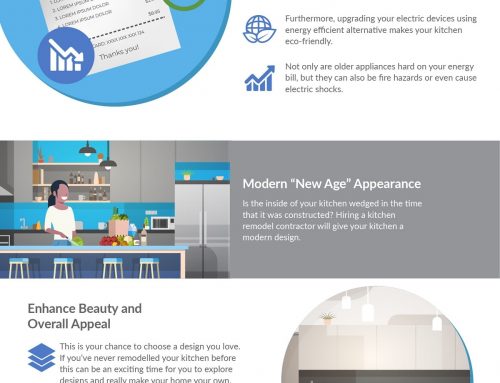Incorporating Sustainable Practices In Cabinet Making
Incorporating Sustainable Practices In Cabinet Making
Blog Article
Material By-Chappell McCleary
When it comes to cabinet production, considering lasting practices is not simply a trend yet an essential facet that can form the future of your craft. By exploring the world of eco-friendly materials and waste reduction strategies, you open doors to a world where advancement satisfies duty. The impact of these choices surpasses your workshop; it resonates with customers that look for not only high quality but also a commitment to preserving our atmosphere. So, just how can you mix workmanship with sustainability to create a long-term legacy in the sector?
Value of Lasting Practices
In sustainable closet production, prioritizing environment-friendly materials and manufacturing approaches not only benefits the setting but also makes sure lasting feasibility for your company. By selecting sustainable practices, you display your dedication to reducing ecological influence and meeting the growing need for eco-conscious products. Clients are progressively attracted to services that prioritize sustainability, offering you an one-upmanship in the market.
Applying sustainable practices can likewise lead to cost savings in the future. While there might be initial investments associated with transitioning to environment-friendly materials and manufacturing techniques, the efficiency gains and favorable track record you build can cause financial benefits gradually. Additionally, lasting methods help in minimizing waste generation and power intake, which can better contribute to reducing operational expenses.
Eco-Friendly Materials Selection
Choosing environment-friendly products is essential in sustainable cabinet making to decrease ecological effect and meet the increasing need for environmentally mindful products. When selecting materials for your cabinets, go with sustainable choices like bamboo, redeemed timber, or recycled materials.
Bamboo is a fast-growing and renewable resource that's strong and durable, making it an outstanding selection for cabinet building. Recovered wood offers an unique, rustic look to closets while minimizing the requirement for lowering brand-new trees. Using recycled products, such as composite wood made from recycled wood fibers and resin, aids draw away waste from garbage dumps and lowers the overall ecological impact of your task.
Furthermore, take into consideration using low-VOC (unstable natural substances) finishes and adhesives to further improve the eco-friendliness of your cupboards. These products launch fewer hazardous chemicals right into the air, promoting far better indoor air quality and lowering wellness threats for both you and your customers.
Waste Reduction Techniques
To minimize waste in closet making, think about executing efficient recycling techniques throughout your manufacturing process. Begin by setting apart different types of waste such as timber scraps, cardboard product packaging, and steel parts. Establish designated reusing containers for every material to ensure simple separation. Motivate https://www.usatoday.com/story/money/at-home/2021/10/06/home-improvement-boost-value-your-house-these-renovations/6002264001/ to welcome a culture of waste reduction by informing them on the relevance of reusing and the influence it has on the setting.
An additional efficient waste decrease strategy is to optimize material use. Plan your cuts carefully to make best use of the return from each sheet of wood, decreasing the quantity of offcuts produced. Think about using computer-aided design (CAD) software program to produce exact cutting formats that lessen waste.
In addition, explore possibilities to repurpose or give away remaining materials instead of discarding them. Partner with neighborhood woodworking schools or community centers that could gain from getting your surplus products. By executing these waste decrease methods, you can reduce your ecological effect and contribute to an extra sustainable cabinet making industry.
Verdict
Including sustainable techniques in closet making is critical for lowering ecological impact and making sure long-lasting success.
By selecting eco-friendly products and implementing waste reduction strategies, cabinet makers can showcase their dedication to sustainability while likewise benefitting their bottom line.
Accepting these practices not only helps protect the world however likewise offers organizations a competitive edge out there.
Make the smart choice for the environment and your business by prioritizing sustainability in cupboard making.
